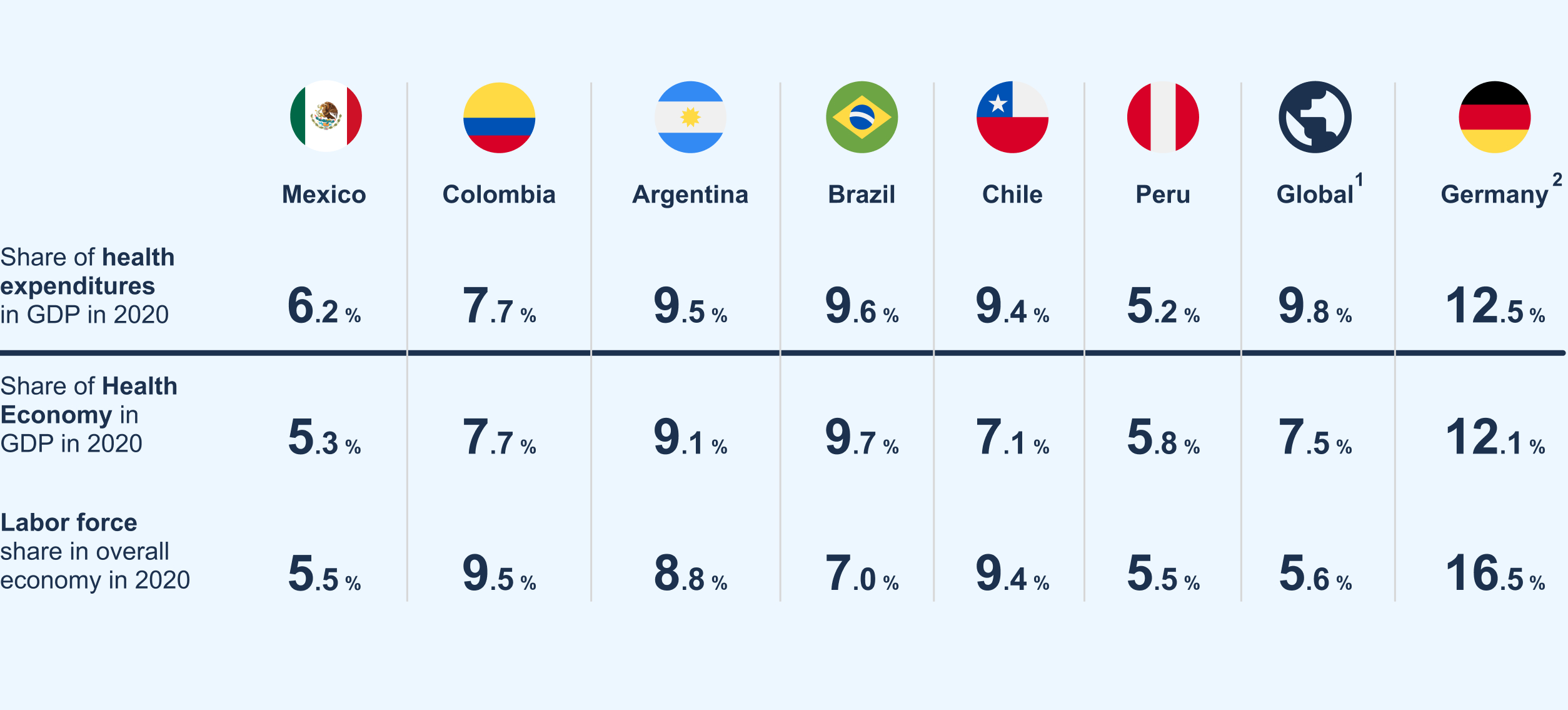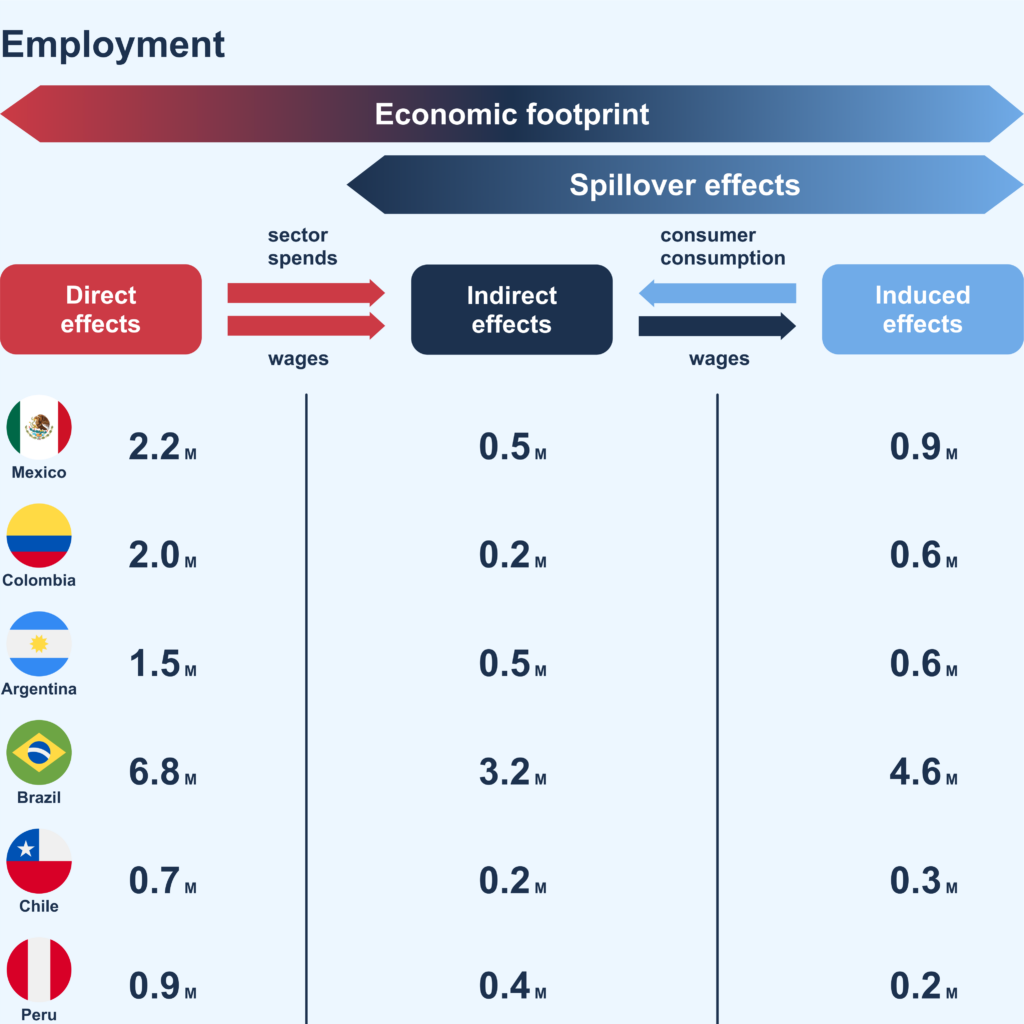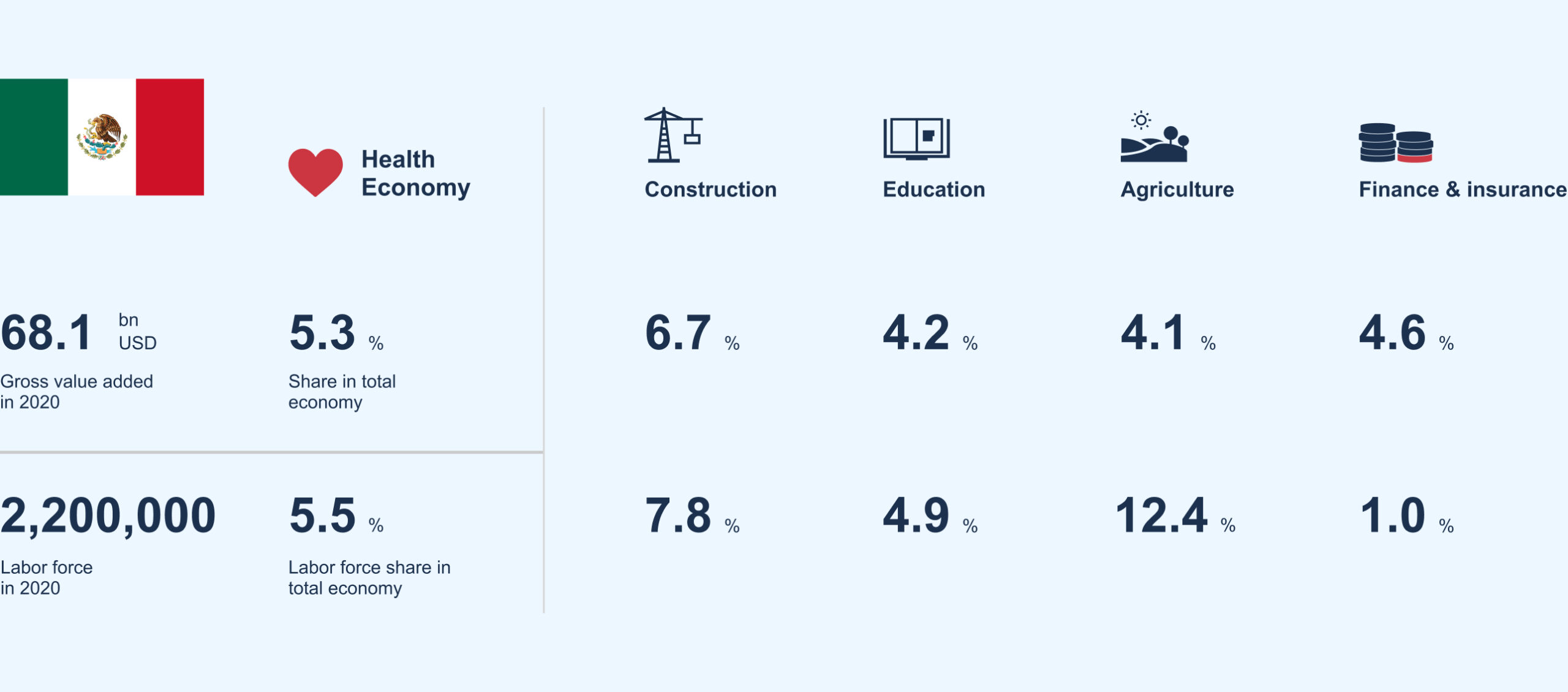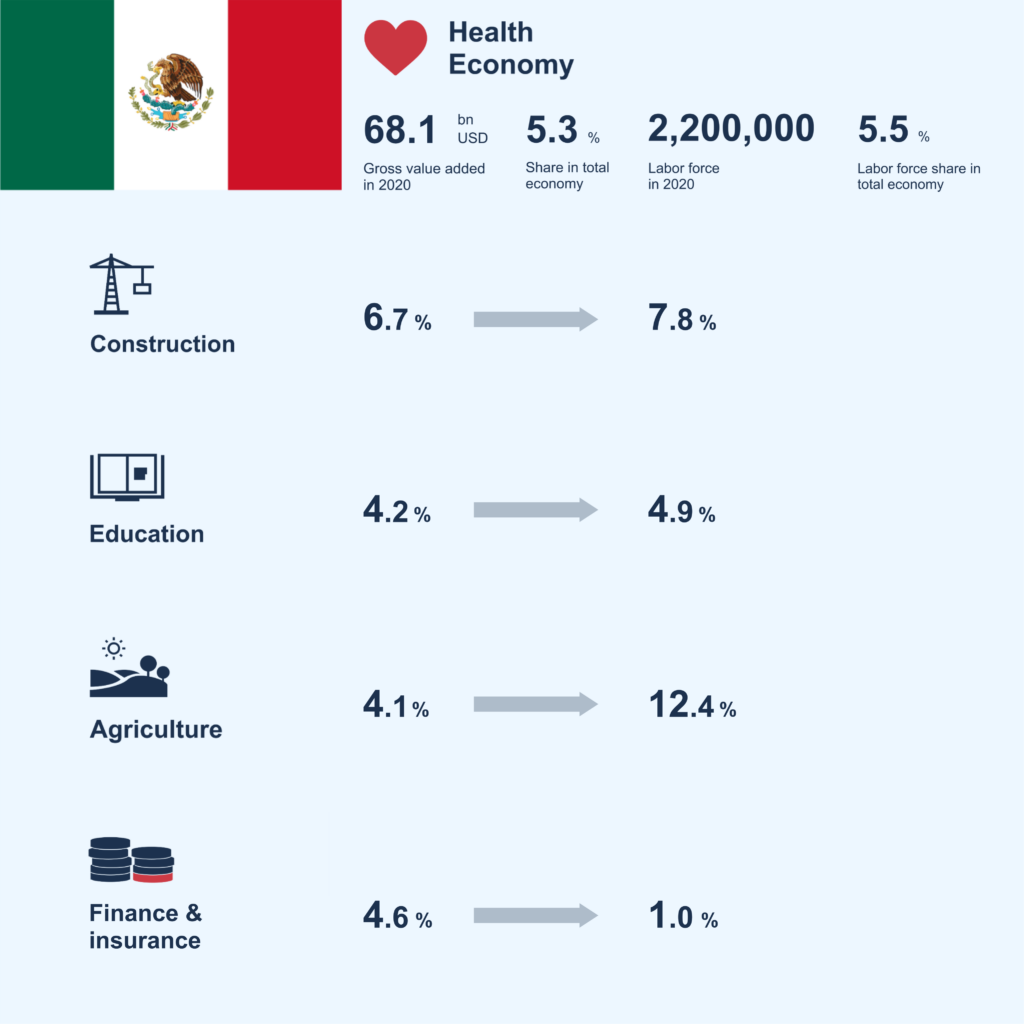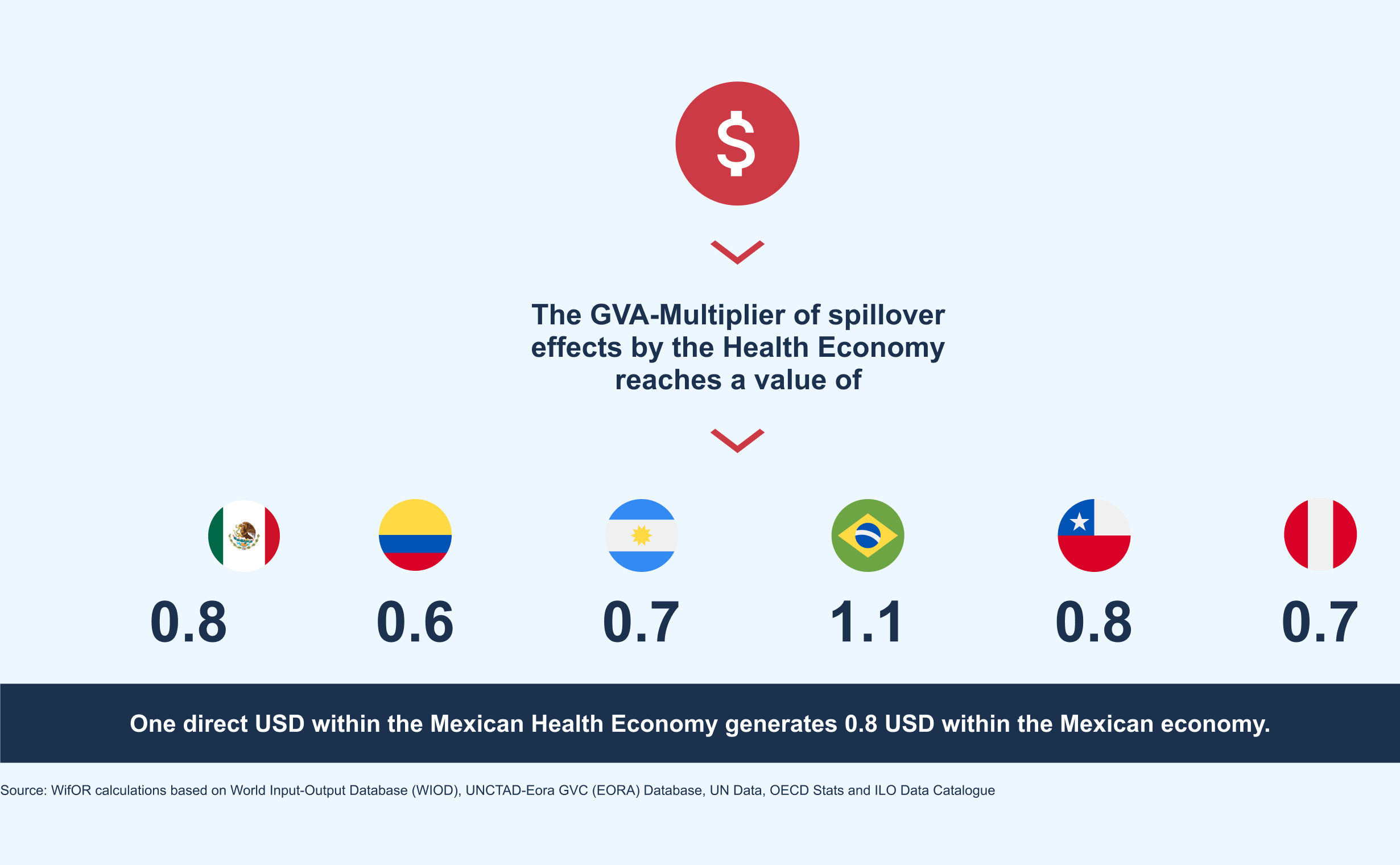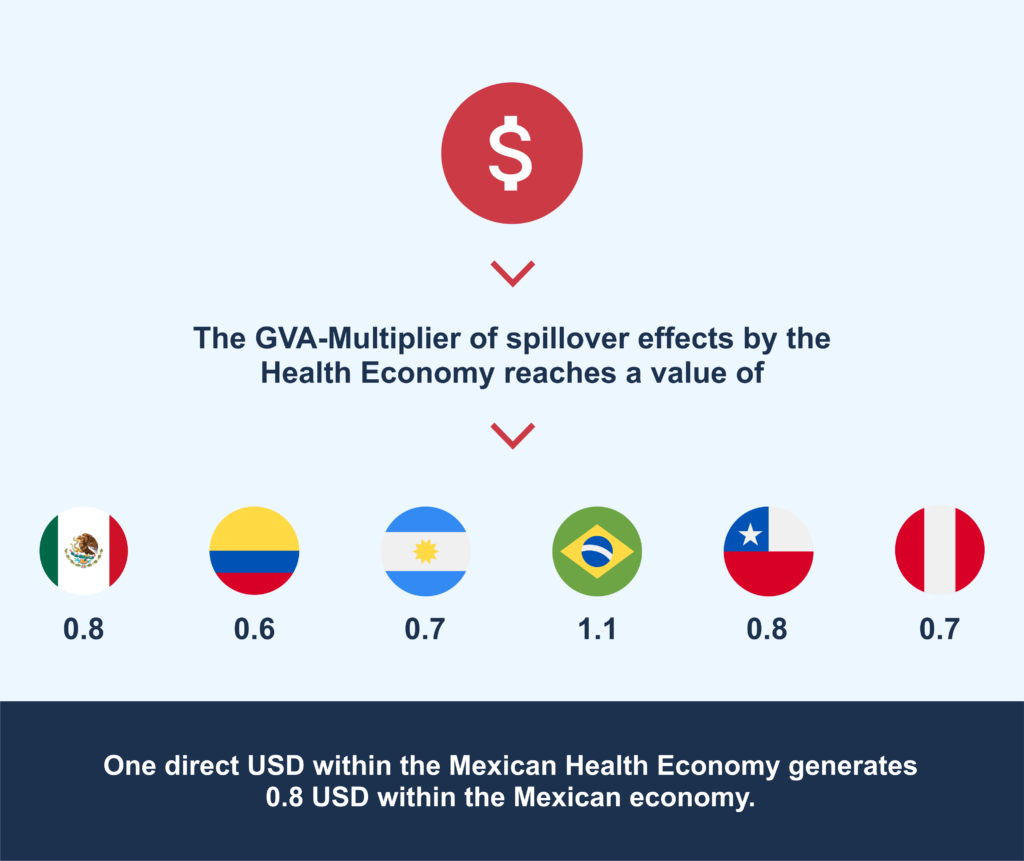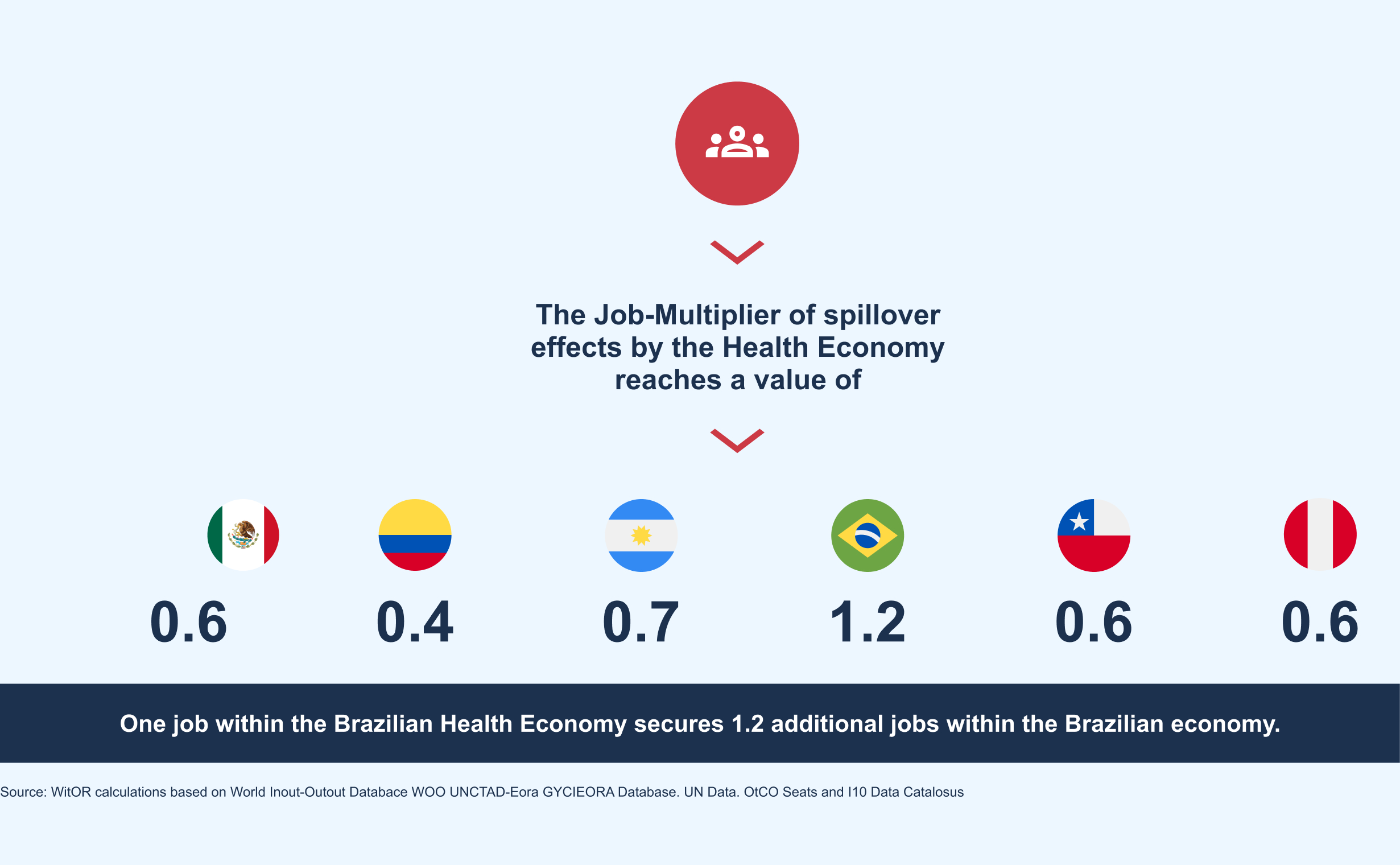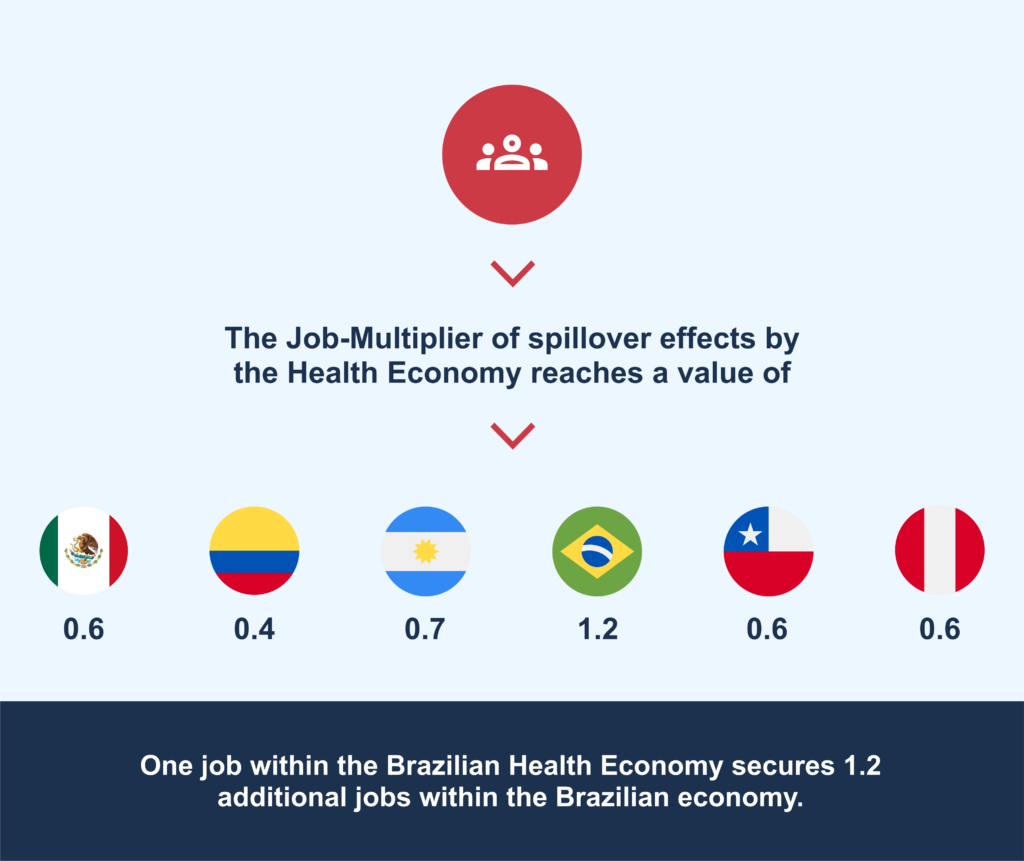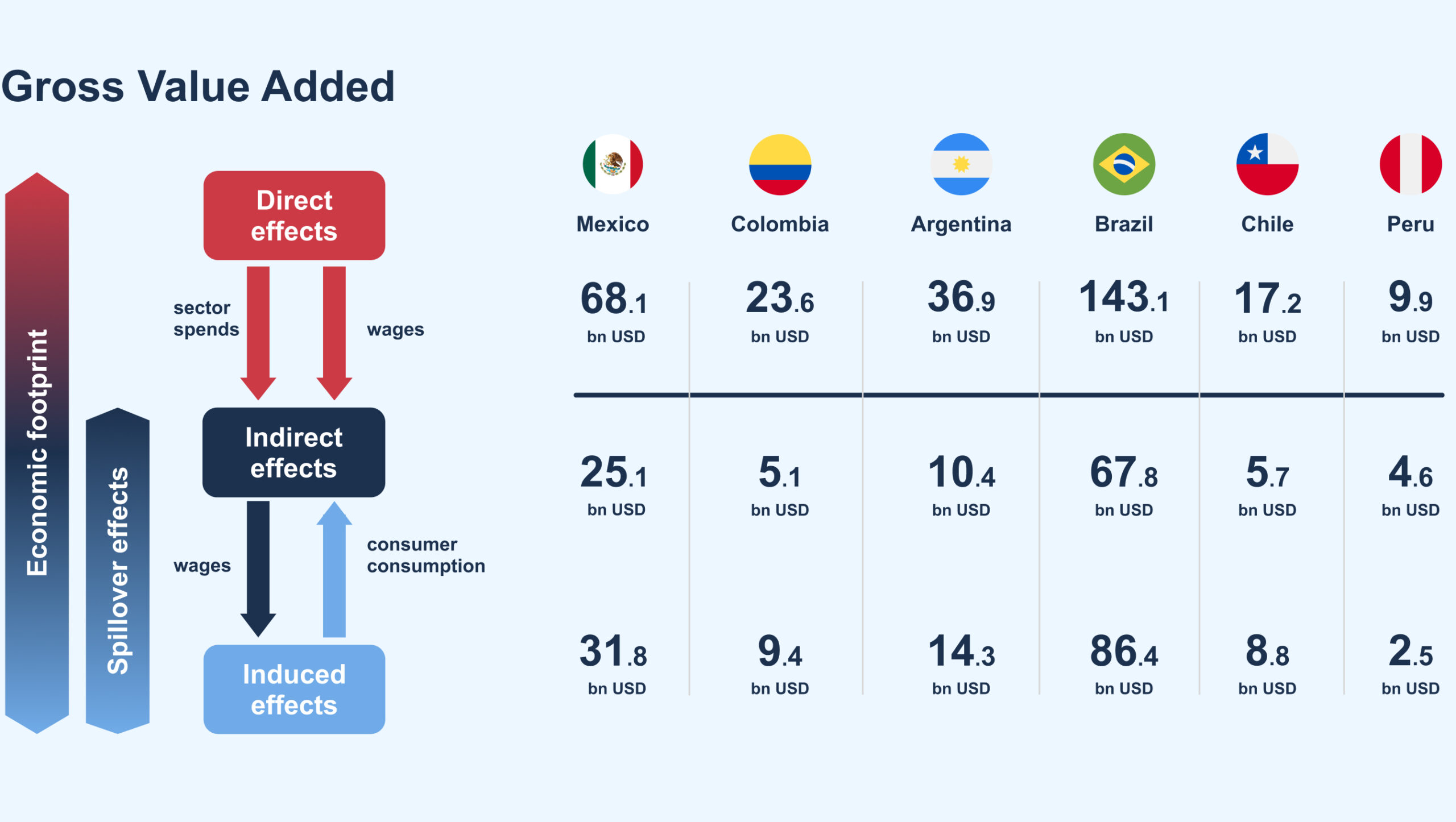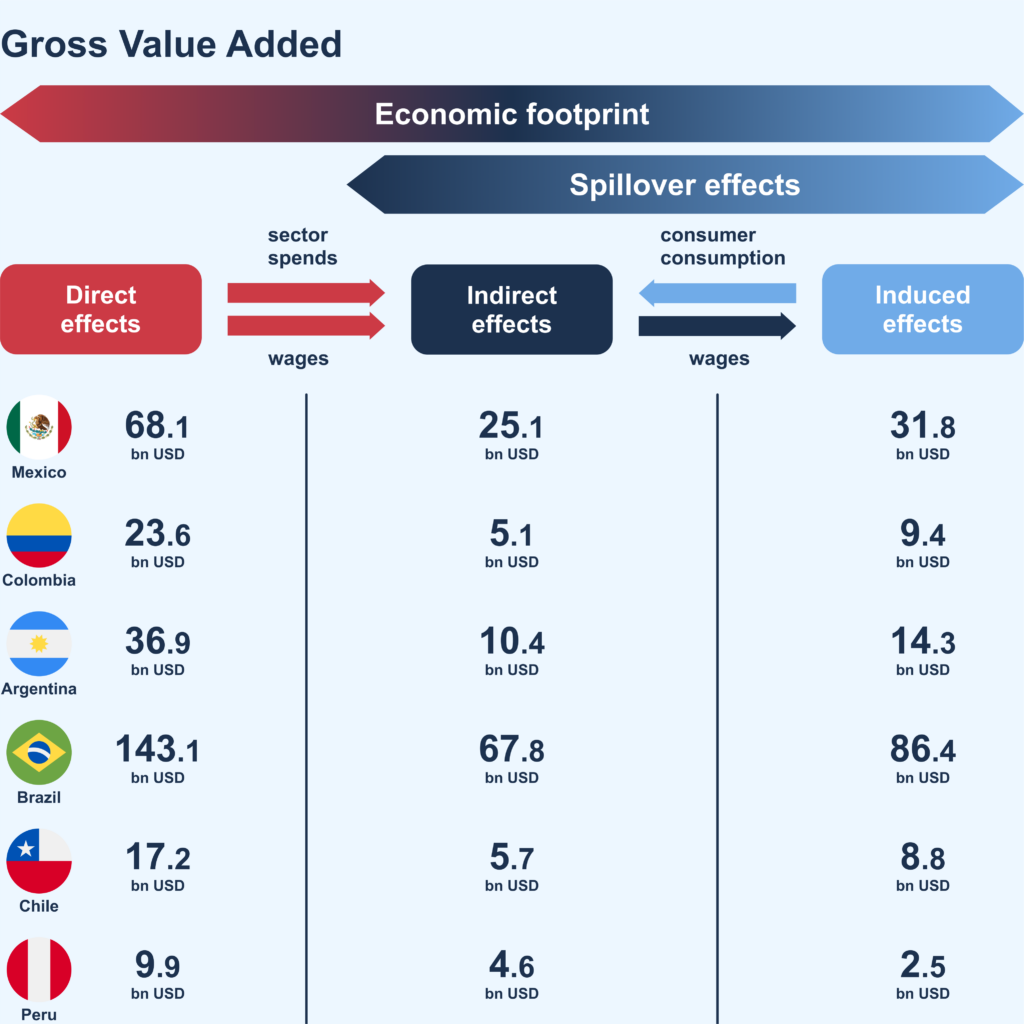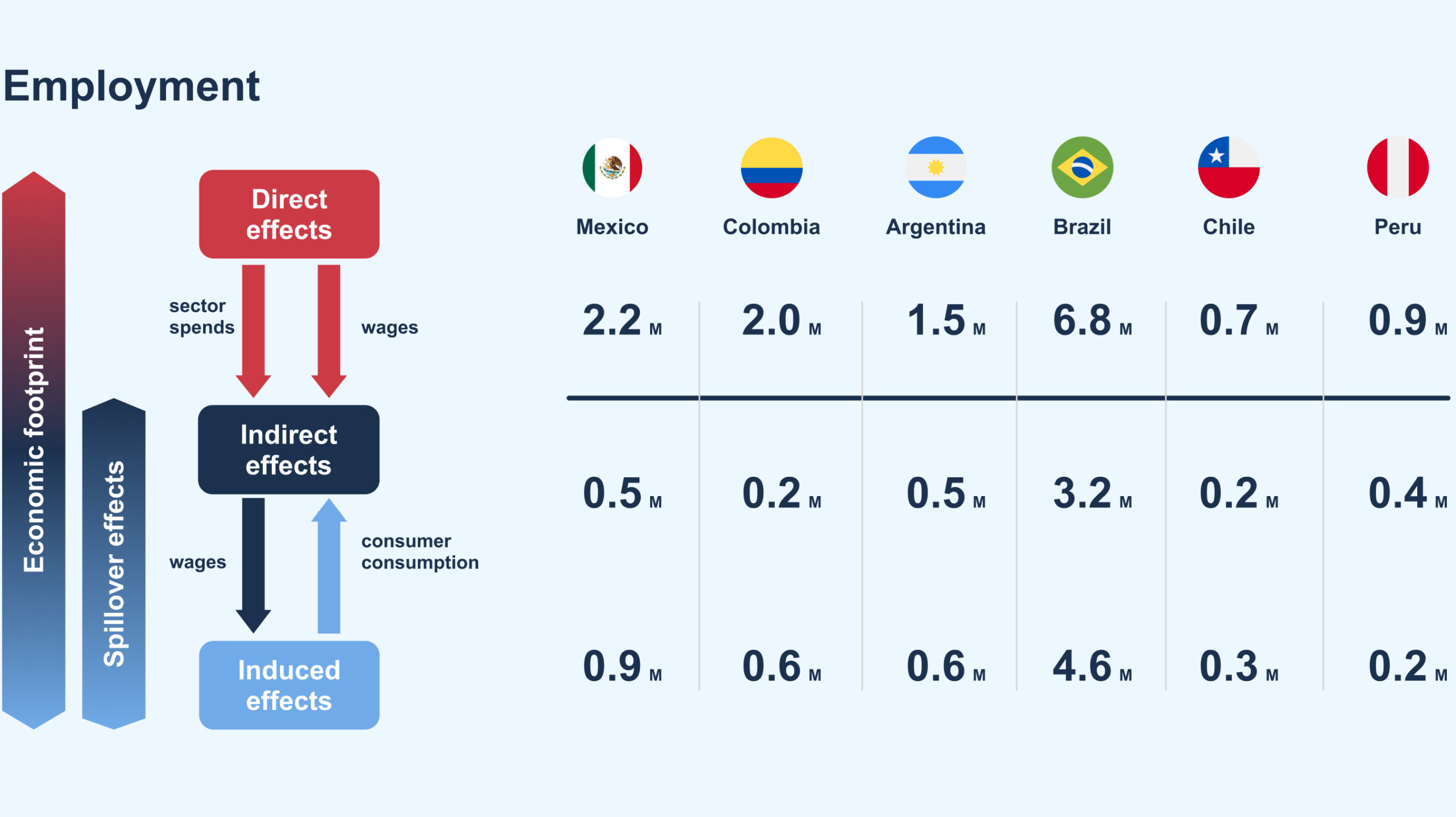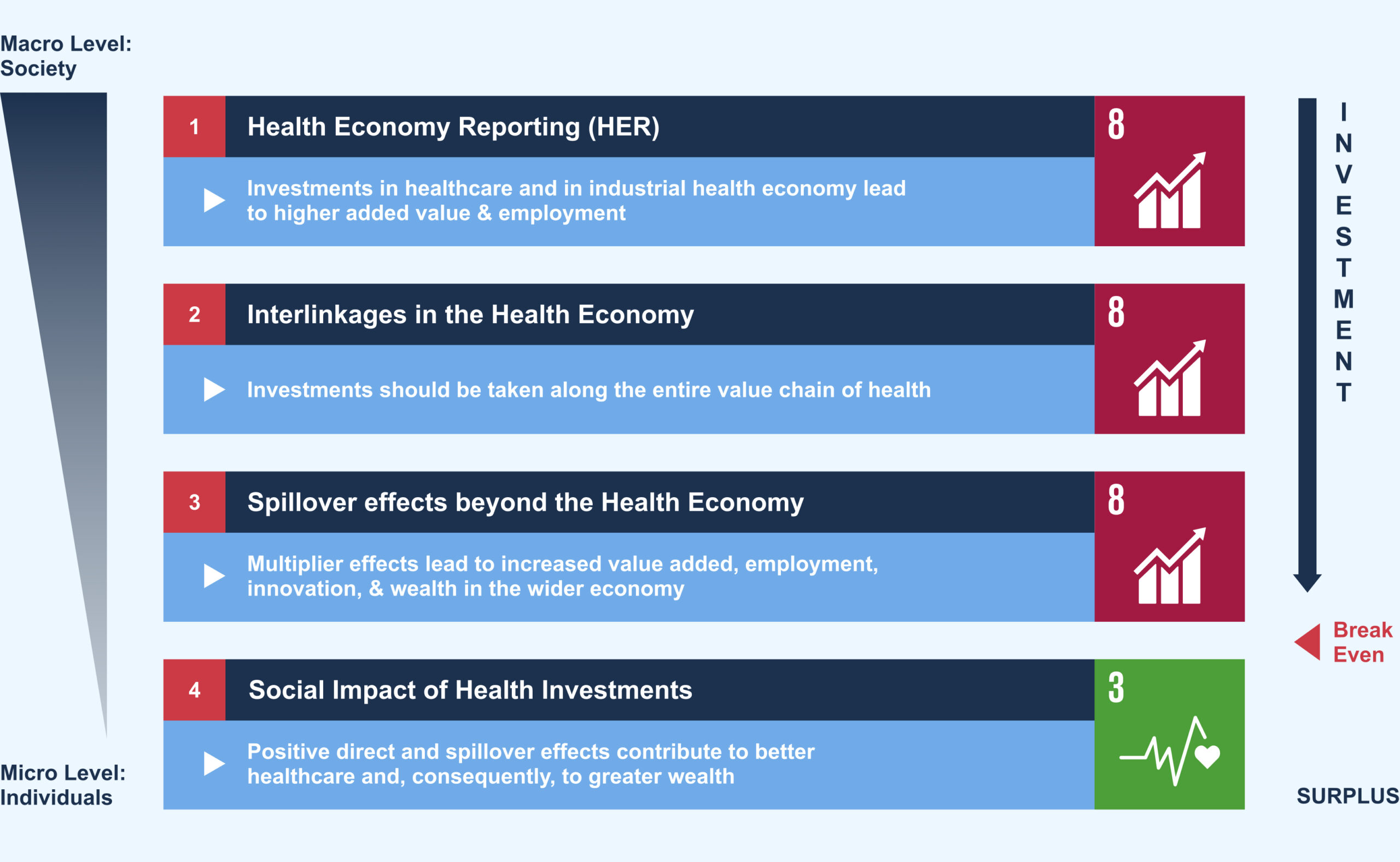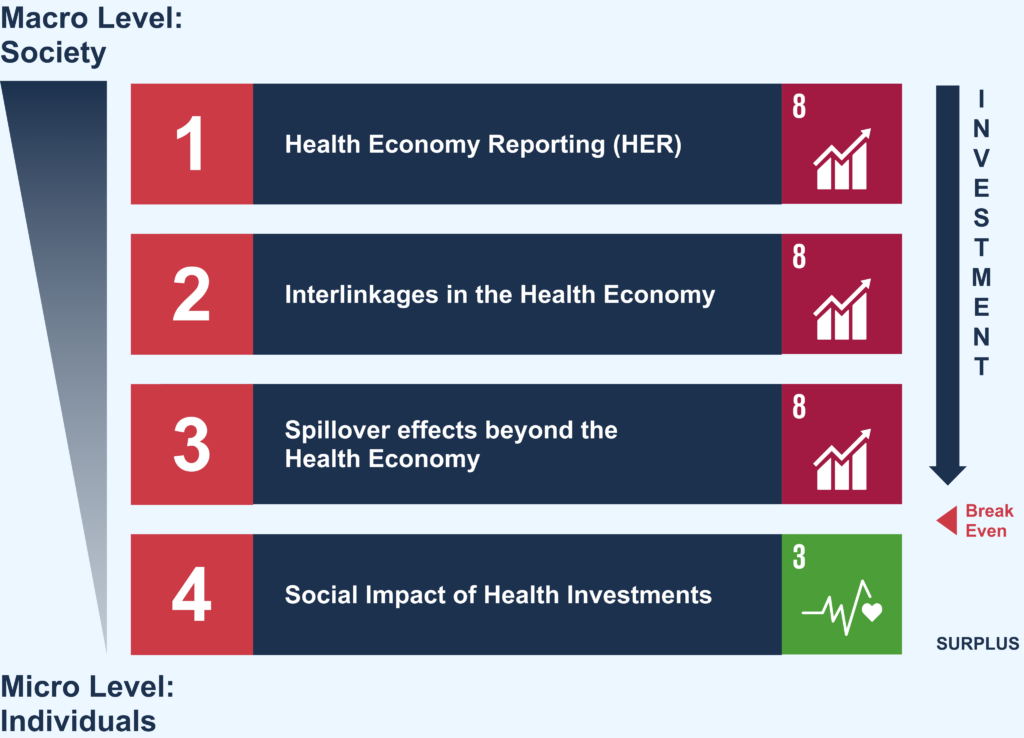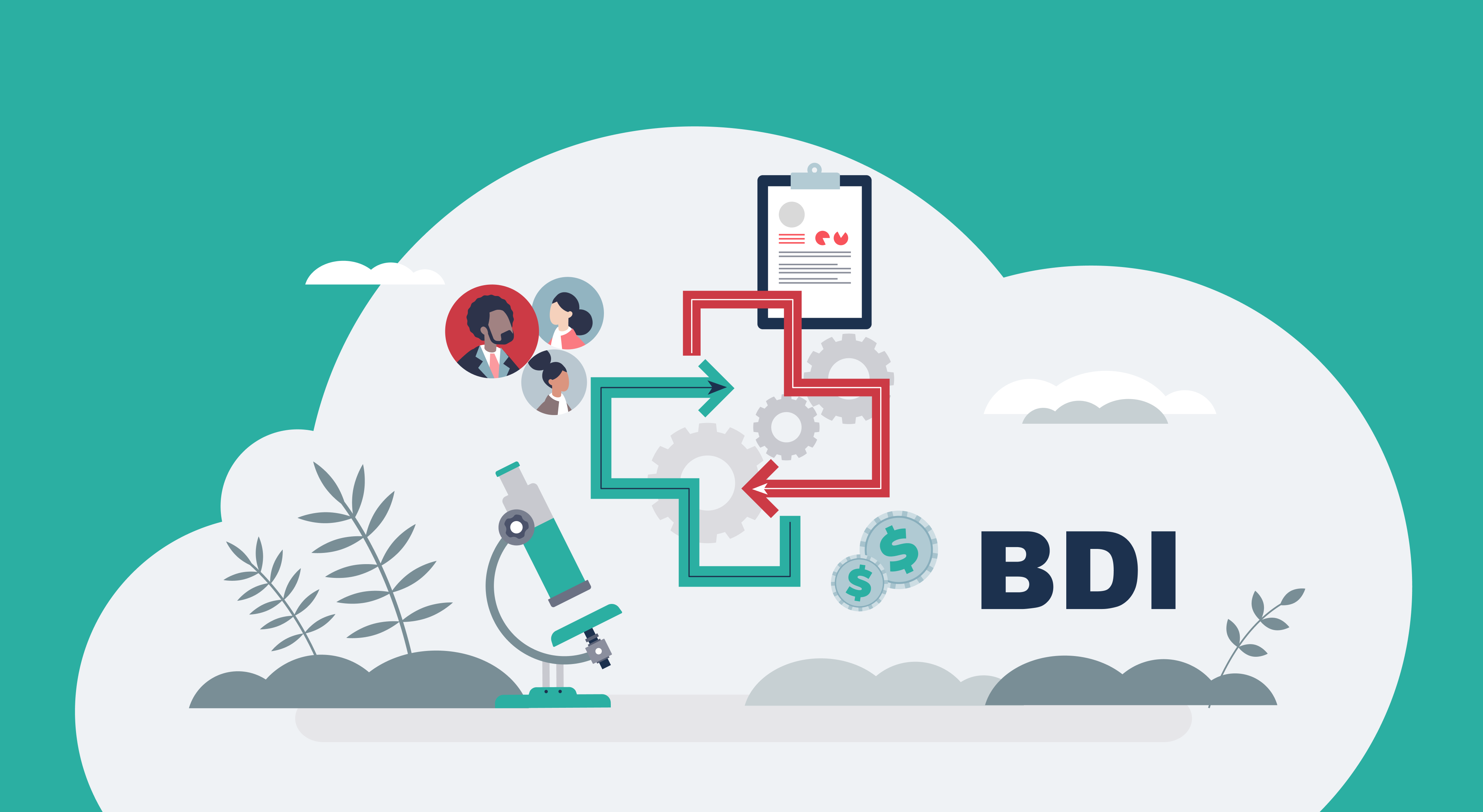What is the value of health investments? How can we achieve a better understanding of the Health Economy’s meaning for a country? WifOR’s Health Economy Reporting (HER) provides a structured approach for governments, the private sector, and the general-public stakeholders to better understand the size, impact, and importance of the Health Economy. The main goal is fostering a paradigm shift to viewing health expenditures as investments and drivers for economic growth and societal well-being. In this article, we present our research approach with specific results using Latin America as an example. The figures illustrate why health investments pay off with a high return on investment, stabilize the economy, and support employment.
Health matters most. However, the pandemic has revealed the enormous differences in the value placed on health in different nations. Most countries around the world were unprepared for such a health crisis and had not strategically planned their health investments. This has affected not only the lives of individuals but also the social and economic well-being of countries. The pandemic has shown that better health leads to economic growth and helps to relieve the burden on global health systems. Health investments create value through positive returns for the health sector, the economy, employment, and, overall, for the wealth of the society. Nevertheless, some countries continue to invest only a small share of their GDP in health.
Main goals of WifOR’s Health Economy Reporting (HER)
- Measure the size of the health economy and the return on investment of health spending as well as to enable comparison with other sectors and countries.
- Support placing health in all policies; guide and steer economic social welfare, and health policymaking.
- Enable countries to benchmark Health Economy contributions to political targets such as SDG 8 (decent work and economic growth) and SDG 3 (good health and wellbeing). Only through a benchmark and a classification of investments and their return can the Health Economy be measured according to its potential opportunities.
The following figure shows the contribution of selected Latin American countries’ health economies to the wider economy in 2020. Depending on the country, the Latin American Health Economy contributed between 5.3 % to 9.7 % to GDP. It also employs between 5.5 % and 9.5 % of the labor force. These findings also provide evidence that countries investing more in their Health Economies can drive economic growth and employment.
Selected results on the importance of the Health Economy
Through Health Economy Reporting (HER), the Health Economy (HE) can be quantified as a distinct and important macroeconomic sector. Comparing the HE to other sectors in the wider economy allows for its relative size to be understood and benchmarked. The analysis for Mexico, for example, identifies the contribution of the Mexican HE in relation to other sectors is quantified.
The results of WifOR’s analysis show that in terms of GDP contribution, the Health Economy is larger than the Mexican education, agriculture, and finance sector. This underlines the relative importance of the Health Economy for the Mexican economy.
An economic stabilizer in times of crisis
The data also highlights the industry’s resilience in times of crisis. While the economy as a whole decreased significantly in 2020, the share of the Health Economy increased in all countries surveyed with the exception of Chile.
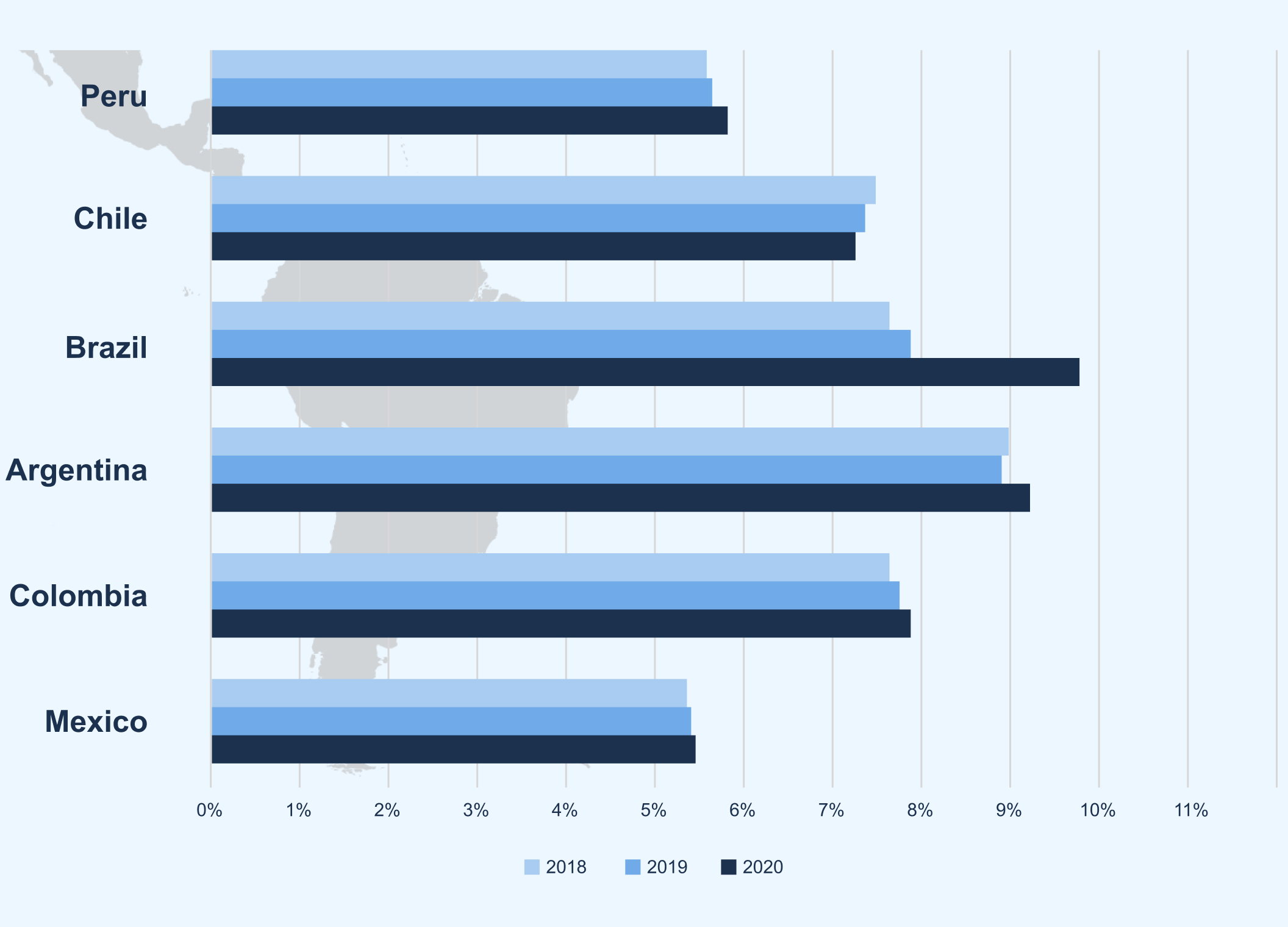
Economic footprint of the healthcare industry – direct, indirect, and induced effects
A country’s Health Economy is linked with other sectors in an economy. WifOR Institute therefore calculates multipliers that quantify the extent of the spillover effects on the wider economy. The HER approach allows for an evidence-based understanding of the overall “ROI (Return on Investment) of health”. This enables, among other things, and the extent to which health investments create value for national GDP.
In Mexico, for example, USD 1 invested directly in the Mexican Health Economy generates an additional USD 0.8 within the overall Mexican economy.
In addition, each job created in Mexico’s Health Economy creates another 0.6 jobs through spillover effects in the overall economy. These figures support the argument that health investments create value and a visible return on investment. Based on the spillover effects measured, there is an urgent need to develop a new understanding of health, healthcare and investments in public health. As a macroeconomic sector, the Health Economy creates employment and economic activity. These are additional benefits beyond health. Health Economy spillover effects are expressed in terms of indirect effects (along the value chain) and induced effects (caused by expenditures of directly and indirectly generated income).
The varying extent of these spillover effects across countries reflects the different size of the respective Latin American economy.
Overall, in addition to the USD 300 billion direct effects, USD 270 billion is generated through spillover effects. The measurement of indirect and induced effects for the labor force underlines the relevance of the Health Economy for the labor market. For example, 2.2 million people are directly employed in the Mexican Health Economy. However, a further 0.5 and 0.9 million employees depend on the sector via indirect and induced effects.
The Health Economy can thus be described as a job motor for the overall economy. In addition, employment related to the Health Economy is particularly productive. In general, there is a clear correlation between the size of the Health Economy and the employment it provides for the overall economy.
Health investments create value: HER for selected Latin American countries 2020
- In the wider economy, the Health Economy of selected Latin American countries created direct effects of USD 300 bn. Spillover effects amounted to USD 270 bn in 2020.
- The Health Economy generates 26 million jobs in the selected countries.
- Every dollar of Gross Value Added (GVA) within the Health Economy generates additional value within the wider economy. For example, USD 1 generated directly by the Mexican Health Economy generates USD 0.8 within the wider Mexican economy.
The German government and Statistical Office, for example, have been using HER on a yearly basis for over a decade. The economic, finance, and health ministers are closely aligned and jointly discuss policy changes. WifOR works with the World Health Organization (WHO), G20 Health and Development Partnership (G20HDP), and with various countries worldwide. We write policy briefs and papers with associations such as Harvard, G20HDP (for both G7 and G20 Presidencies) and the B20 Health Taskforce – who have all endorsed our health value framework.
Read more about the role of the Health Economy and why we should aim for a joint economic and health policy for sustainable economic growth and employment in the article “Towards a Health Economy Policy – a Consolidated Economic and Health Policy Approach” by Prof. Dr. Dennis Ostwald, Rüdiger Leidner, and Dr. Emmanuel Alexandrakis, Steinbeis Edition (2021):





